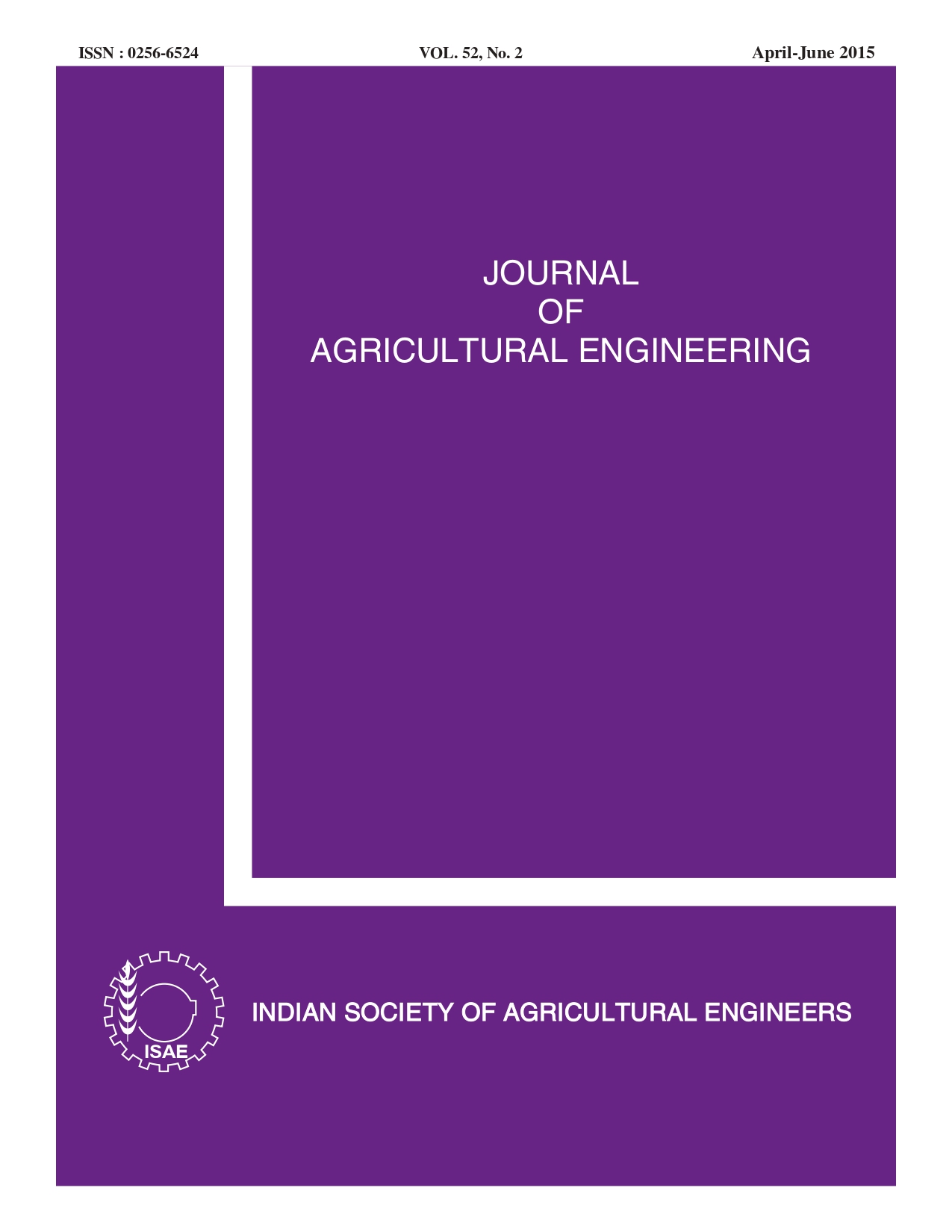Effect of Deficit Irrigation on Growth and Yield of Tomato under Drip Irrigation in Shade Net House
DOI:
https://doi.org/10.52151/jae2015522.1577Keywords:
Deficit irrigation, drip irrigation, evapotranspiration, shade net house, tomato cropAbstract
The effect of deficit irrigation on growth and production of drip irrigated tomato under shade net house was studied through field experiment. Four different levels of drip irrigation equivalent to 100%, 80%, 60% and 40% of crop evapotranspiration with five replications were considered for their effect on crop growth and crop yield inside the shade net house. Tomato (Solanum Lycopersicon, Badshah Variety) plants were grown under the shade net house with 50% shade. Plant height, number of leaves and individual fruit weight were found to be highest with 80 % irrigation, giving highest yield of 108.30 t.ha-1. Actual irrigation water application between 1.62 and 4.58 mm.day-1 was thus recommended for tomato crop in a shade net house.
References
Dunage V S; Balakrishnan P; Patil M G. 2009. Water use efficiency and economics of tomato using drip irrigation under net house conditions. Karnataka J. Agric. Sci., 22 (1), 133-136.
Islam T; Sarker H; Alam J; M Harun-ur-Rashid. 1990. Water use and yield relationships of irrigated potato. Agric. Water Manage., 18, 173-179.
Mantur S M; Patil Sateesh R. 2008. Influence of spacing and pruning on yield of tomato grown under shade house. Karnataka J. Agric. Sci., 21 (1), 97-98.
Harmanto Salokhe V M; Babel M S; Tantau H J. 2005. Water requirement of drip irrigated tomatoes grown in greenhouse in tropical environment. Agric. Water Manage.,71, 225-242.
Kirda C; Cetin M; Dasgan Y; Topcu S; Kaman H; Ekici B; Derici M R; Ozguven A I. 2004. Yield response of greenhouse grown tomato to partial root drying and conventional deficit irrigation. Agric. Water Manage., 69(3), 191-201.
Owusu-Sekyere J D; Sam-Amoah L K; Teye E; Osei BP. 2012. Crop coefficient (kc), water requirement and the effect of deficit irrigation on tomato in the coastal savannah zone of Ghana. Int. J. Sci. Nature, 3(1), 83-87.
Patane Cristina; Tringali Simona; Sortino Orazio. 2011. Effects of deficit irrigation on biomass, yield, water productivity and fruit quality of processing tomato under semi-arid Mediterranean climate conditions. Scientia Horticulture, 129, 590-596.
Sagoo G A; Khan A E; Himyatullah H; Khan A M; Ahmad K H. 2010. Morphological response of autumn planted sugarcane to available soil moisture depletion and planting geometry on different soils under arid conditions. Sarhad J. Agric., 26(2), 187-194.
Tiwari G N. 2003. Greenhouse Technology for Controlled Environment. Narosa Publishing House, New Delhi, 67–77.
Tiwari K N; Singh Ajai; Mal P K. 2000. Economic feasibility of raising seedlings and vegetable productions under low cost plastic green house. In: Proc. of 15th International Congress of Plastics in Agriculture and the 29th American Agricultural Plastics Congress, Sep. 23-27, Pennsylvania, USA.














